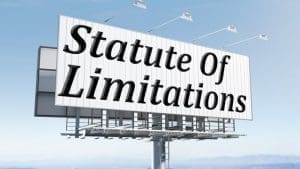Name, Image, and Likeness (NIL) Rights: Legal Framework for Representing Athletes
The legal landscape surrounding Name, Image, and Likeness (NIL) Rights: Legal Framework for Representing Athletes has fundamentally transformed collegiate athletics, creating unprecedented opportunities while simultaneously generating complex regulatory challenges that demand sophisticated legal guidance. The Supreme Court’s decision in NCAA v. Alston in 2021 opened the floodgates for student-athlete compensation, establishing constitutional principles that recognize the inherent property rights individuals possess in their own identity and commercial value. This seismic shift has created a new practice area that requires attorneys to navigate an intricate web of federal constitutional law, state legislation, NCAA regulations, and contractual obligations while protecting their clients’ immediate interests and long-term career prospects.
The constitutional foundation for NIL rights rests on fundamental principles of property ownership and commercial freedom that have long been recognized in American jurisprudence. The Fourteenth Amendment’s protection of property rights extends to an individual’s name, image, and likeness as valuable commercial assets that cannot be appropriated without consent or compensation. This constitutional framework provides the legal basis for challenging NCAA restrictions that previously prevented student-athletes from monetizing their personal brands, while also establishing the parameters within which state and federal regulations must operate to remain constitutionally permissible.
Understanding the current NIL legal framework requires recognizing that we are witnessing the emergence of a new area of sports law that combines elements of intellectual property, contract law, employment regulation, and constitutional jurisprudence. The patchwork of state laws, NCAA policies, and institutional regulations creates a complex compliance environment that demands careful legal analysis and strategic planning. Attorneys representing student-athletes must possess expertise across multiple legal disciplines while staying current with rapidly evolving regulations and enforcement priorities that can significantly impact their clients’ eligibility and earning potential.
Constitutional Foundations and Property Rights
The constitutional basis for student-athlete NIL rights derives from well-established principles regarding individual property rights and commercial freedom that the Supreme Court has consistently protected against governmental interference. The Court’s analysis in NCAA v. Alston emphasized that restrictions on student-athlete compensation must satisfy antitrust scrutiny and cannot be justified merely by appeals to amateurism or tradition. This constitutional framework recognizes that an individual’s name, image, and likeness constitute valuable property interests that deserve legal protection comparable to other forms of intellectual property.
The Fourteenth Amendment’s Due Process Clause provides additional constitutional protection for NIL rights by preventing arbitrary governmental restrictions on individual economic liberty. State laws that impose unreasonable limitations on student-athlete NIL activities must satisfy constitutional scrutiny, ensuring that any restrictions serve legitimate governmental interests and are narrowly tailored to achieve those objectives. This constitutional framework creates opportunities for legal challenges to overly restrictive state laws or NCAA regulations that impermissibly burden student-athletes’ property rights.
Property law principles underlying NIL rights recognize that individuals possess inherent ownership of their personal identity and commercial value, similar to other forms of intellectual property such as trademarks and copyrights. This legal framework provides the foundation for contractual arrangements that license the use of student-athletes’ NIL while preserving their long-term ownership and control over these valuable assets. Attorneys must understand these property law concepts to structure agreements that protect their clients’ interests while complying with applicable regulations and maximizing commercial value.
The Evolving Regulatory Landscape
The current NIL regulatory environment reflects a complex interplay between federal constitutional principles, state legislation, NCAA policies, and institutional regulations that creates significant compliance challenges for attorneys representing student-athletes. The NCAA’s interim policy adopted in June 2021 established basic parameters for NIL activities while delegating primary regulatory authority to individual states, creating a patchwork of laws that vary significantly in their scope, requirements, and enforcement mechanisms. This decentralized approach has generated uncertainty and compliance challenges that require careful legal analysis and ongoing monitoring of regulatory developments.
State NIL laws demonstrate remarkable diversity in their approaches to regulating student-athlete commercial activities, with some states adopting permissive frameworks that maximize athlete freedom while others impose significant restrictions and disclosure requirements. California’s pioneering Fair Pay to Play Act established the template for comprehensive NIL legislation, while subsequent state laws have experimented with different approaches to agent regulation, institutional involvement, and compliance monitoring. This diversity reflects different policy priorities and creates opportunities for forum shopping while also generating compliance challenges for athletes who compete across state lines.
Federal legislative efforts to create uniform NIL standards have faced significant political and practical obstacles, with competing proposals reflecting different philosophical approaches to student-athlete compensation and regulatory oversight. The absence of federal legislation has allowed states to experiment with different regulatory models while also creating uncertainty about future developments that could significantly impact existing contractual arrangements and business relationships. Attorneys must monitor these federal legislative efforts while advising clients on strategies that can adapt to changing regulatory environments.
Agent Representation and Professional Standards
The regulation of NIL agent representation presents one of the most significant challenges in the current legal landscape, as traditional sports agent regulations were not designed to address the unique circumstances of student-athletes who maintain their amateur status while engaging in commercial activities. Unlike professional sports leagues that maintain comprehensive agent certification and regulation programs, the NIL environment operates with minimal oversight of agent qualifications, conduct, and compensation structures. This regulatory gap creates opportunities for exploitation while also generating uncertainty about professional standards and ethical obligations.
Professional licensing requirements for NIL representatives vary significantly across states, with some jurisdictions requiring agent registration and bonding while others impose minimal oversight. The absence of uniform professional standards creates challenges for student-athletes seeking qualified representation while also generating compliance risks for attorneys who may inadvertently violate state-specific requirements. Legal practitioners must understand these varying requirements while also considering how their representation of NIL clients intersects with existing professional responsibility obligations and potential conflicts of interest.
The fiduciary duties owed by attorneys to student-athlete clients in NIL matters require careful consideration of the unique vulnerabilities and pressures facing young athletes who may lack experience in commercial negotiations and contract analysis. These duties extend beyond traditional legal representation to encompass broader advisory responsibilities regarding career planning, financial management, and risk assessment that can significantly impact long-term athletic and professional prospects. Attorneys must balance their clients’ immediate commercial interests with longer-term considerations about eligibility preservation, professional sports prospects, and educational objectives.
Contract Negotiation and Risk Management
Effective NIL contract negotiation requires sophisticated understanding of the commercial, legal, and regulatory factors that can impact student-athlete interests both during their collegiate careers and in their transition to professional sports. Contract terms that may appear favorable in the short term can create significant problems if they conflict with NCAA regulations, state laws, or future professional opportunities. Attorneys must conduct comprehensive risk assessments that consider not only immediate compensation but also long-term implications for eligibility, professional prospects, and intellectual property rights.
Exclusivity clauses in NIL agreements present particular challenges because they can significantly limit student-athletes’ future earning potential while also creating conflicts with team sponsorships and institutional relationships. These clauses must be carefully negotiated to ensure appropriate scope limitations regarding duration, geographic reach, and product categories while also preserving flexibility for future opportunities. The enforceability of exclusivity clauses may also be subject to challenge under antitrust principles or state laws that protect student-athlete rights to pursue multiple commercial opportunities.
Intellectual property considerations in NIL contracts require careful attention to the scope of rights being licensed, the duration of those rights, and the circumstances under which they may be terminated or modified. Student-athletes must retain sufficient control over their NIL to protect their long-term commercial interests while also providing sufficient rights to commercial partners to justify their investment. This balance requires sophisticated understanding of intellectual property law and commercial licensing practices that can accommodate the unique circumstances of student-athlete careers.
Compliance and Eligibility Protection
Maintaining NCAA eligibility compliance while pursuing NIL opportunities requires careful coordination between commercial activities and athletic participation to ensure that student-athletes do not inadvertently violate rules that could jeopardize their collegiate careers. The NCAA’s prohibition on pay-for-play arrangements and recruiting inducements remains in effect despite the liberalization of NIL rules, creating potential compliance traps for unwary athletes and their representatives. Attorneys must understand these continuing restrictions while also staying current with evolving NCAA interpretations and enforcement priorities.
State law compliance adds another layer of complexity to NIL representation, as student-athletes must satisfy the requirements of the state where their institution is located while also considering the laws of states where they may engage in commercial activities. Disclosure requirements, agent registration obligations, and restrictions on institutional involvement vary significantly across jurisdictions and can create conflicts that require careful legal analysis and strategic planning. Failure to comply with applicable state laws can result in eligibility consequences and legal liability that can be devastating to student-athlete careers.
Institutional policies regarding NIL activities often impose additional requirements beyond NCAA and state law obligations, including disclosure procedures, approval processes, and restrictions on activities that conflict with university sponsorships or values. These institutional requirements can vary significantly even within the same state and may change frequently as universities adapt their policies to evolving circumstances. Attorneys must understand these institutional requirements while also advocating for their clients’ interests when policies appear unreasonable or inconsistent with legal rights.
Financial Planning and Tax Implications
The tax implications of NIL income require careful planning and professional coordination to ensure that student-athletes understand their obligations and avoid costly mistakes that could significantly impact their financial position. NIL income is generally subject to federal and state income taxes, and student-athletes may need to make quarterly estimated tax payments to avoid penalties and interest charges. The complexity of tax planning increases when NIL activities involve multiple states or international components that can trigger additional filing requirements and compliance obligations.
Business entity formation may be advisable for student-athletes with significant NIL income to provide liability protection, tax efficiency, and professional credibility in commercial negotiations. The choice between different entity structures requires careful analysis of tax implications, liability exposure, and administrative requirements that can vary significantly based on the student-athlete’s circumstances and commercial activities. Attorneys must coordinate with tax professionals and financial advisors to ensure that business structures support rather than complicate their clients’ overall objectives.
Financial literacy education has become an essential component of comprehensive NIL representation, as many student-athletes lack experience with contract negotiations, tax planning, and financial management that can significantly impact their long-term financial security. Attorneys have both professional and ethical obligations to ensure that their clients understand the financial implications of their decisions while also connecting them with qualified professionals who can provide ongoing support and guidance. This educational component requires ongoing attention throughout the representation relationship rather than one-time advice at contract signing.
Dispute Resolution and Enforcement
The dispute resolution mechanisms available for NIL-related conflicts reflect the diverse legal frameworks governing these relationships, including contract law, intellectual property law, employment regulation, and sports-specific legislation. Traditional contract remedies may be inadequate for addressing NIL disputes that involve ongoing relationships, reputational concerns, and time-sensitive commercial opportunities. Attorneys must understand the full range of available remedies while also considering the practical and strategic implications of different enforcement approaches.
Alternative dispute resolution methods such as mediation and arbitration may be particularly valuable in NIL disputes because they can provide faster resolution while preserving confidentiality and ongoing business relationships. However, the enforceability of arbitration clauses in student-athlete contracts may be subject to challenge under state laws that protect student-athlete rights or federal laws that regulate employment relationships. Attorneys must carefully evaluate the advantages and disadvantages of different dispute resolution mechanisms while also ensuring that their clients retain access to appropriate legal remedies.
Enforcement challenges in NIL disputes often involve complex jurisdictional issues, particularly when contracts involve parties in multiple states or when violations occur across state lines. State courts may lack jurisdiction over out-of-state defendants, while federal courts may lack subject matter jurisdiction over purely contractual disputes. These jurisdictional complexities require careful planning during contract negotiation to ensure that enforcement mechanisms are practical and effective when disputes arise.
Future Developments and Strategic Planning
The evolution of NIL regulations continues at a rapid pace, with proposed federal legislation, ongoing state legislative activity, and NCAA policy development creating uncertainty about future requirements and opportunities. The proposed NCAA settlement that would allow direct institutional payments to student-athletes represents a fundamental shift that could significantly impact the NIL landscape by creating new forms of compensation while also potentially restricting traditional NIL activities. Attorneys must monitor these developments while advising clients on strategies that can adapt to changing regulatory environments.
Professional sports transition planning has become an increasingly important component of NIL representation as student-athletes seek to maximize their collegiate earning potential while preserving their prospects for professional careers. NIL contracts must be structured to avoid conflicts with professional sports league requirements while also providing sufficient flexibility to accommodate career changes and opportunities. This planning requires understanding of professional sports regulations and industry practices that extend beyond traditional college sports law.
Technology and digital rights present emerging challenges and opportunities in NIL representation as social media platforms, streaming services, and digital marketing create new forms of commercial value that may not be adequately addressed by traditional licensing agreements. The rapid evolution of digital platforms and technologies requires ongoing attention to ensure that NIL contracts remain relevant and enforceable in changing technological environments. Attorneys must stay current with technological developments while also understanding their legal implications for intellectual property rights and commercial relationships.
The legal framework governing Name, Image, and Likeness (NIL) Rights: Legal Framework for Representing Athletes represents one of the most dynamic and rapidly evolving areas of sports law, requiring attorneys to combine traditional legal expertise with deep understanding of collegiate athletics, commercial licensing, and regulatory compliance. Success in this practice area demands not only technical legal competence but also strategic thinking about the unique challenges facing student-athletes who must balance commercial opportunities with educational objectives and athletic aspirations.
The constitutional principles underlying NIL rights reflect fundamental American values of individual liberty, property ownership, and economic freedom that transcend partisan political divisions. These principles provide a stable foundation for legal advocacy while also creating opportunities for continued expansion of student-athlete rights as courts and legislatures grapple with the implications of commercialized college athletics. Attorneys who understand these constitutional foundations while staying current with evolving regulations and industry practices will be best positioned to serve their clients effectively in this challenging and rewarding practice area.
The future of NIL representation will likely involve increased standardization of regulations, enhanced oversight of agent conduct, and continued expansion of commercial opportunities as the market matures and stakeholders gain experience with these new legal frameworks. Attorneys who invest in developing expertise in this area while building relationships with industry professionals and regulatory authorities will find themselves at the forefront of an important and growing practice area that serves the interests of student-athletes while contributing to the continued evolution of American sports law.
Citations:
- NCAA Name, Image, and Likeness Rule Explained
- Can College Athletes Have Agents for NIL Contract Negotiations
- NIL and the NCAA: Complete Guide to Name Image Likeness
- Preparing for NIL Changes in 2025: What’s Next for College Athletics
- NIL Contracts Gone Wrong: Real Cases Why Legal Help Matters
- How to Prepare for NIL Changes in 2025 Expert Guide
- NIL Agents: The Good, Bad, and Unregulated Legal Analysis
- Legal Contract Services for Student Athletes and NIL Deals
- Navigating Challenges and Opportunities in Name Image Likeness NIL
- State Law Approach to Student Athlete NIL Rights Guide
- Washington and Lee Law Review NIL Rights Legal Analysis
- Future of College Sports Law: Attorney’s Perspective on NIL
- Evolving Landscape of NIL Rights: State Level Updates 2025
- Legal Considerations for College Athletes NIL Opportunities
- What is NIL and Why College Athletes Need Legal Representation
- Uniform Laws Commission NIL Rights Legal Document
- Former Collegiate Football Stars NIL Lawsuits Retroactive Compensation Update
- NCAA Adopts Interim Name Image and Likeness Policy
- Semantic Scholar Research on NIL Rights and Legal Framework
- Semantic Scholar Study on Student Athlete NIL Rights
- Semantic Scholar Analysis of NIL Legal and Economic Impact
- Semantic Scholar Research on College Sports NIL Regulations
- Semantic Scholar Paper on NIL Rights and Athletic Compliance
- Semantic Scholar Study on Name Image Likeness Legal Framework
- Semantic Scholar Analysis of NIL Rights and Student Athletes
- Semantic Scholar Research on NIL Legal and Regulatory Issues
- Semantic Scholar Paper on College Athletics NIL Rights
- PubMed Medical Research on Athletic Performance and Rights
- US News Guide to NCAA NIL Rules for College Athletes
- Name Image and Likeness for Interscholastic Athletes Guide
- Semantic Scholar Research on NIL Rights Legal Analysis
- Semantic Scholar Study on Athletic Rights and Legal Framework
- Semantic Scholar Analysis of Student Athlete Legal Rights
- Semantic Scholar Paper on NIL Rights and College Sports
- Semantic Scholar Research on Athletic Legal and Economic Issues
- Semantic Scholar Study on NIL Rights and Regulatory Compliance
- Semantic Scholar Analysis of College Athletics Legal Framework
- Semantic Scholar Paper on Student Athlete Rights and NIL
- Semantic Scholar Research on NIL Legal and Policy Issues
- Semantic Scholar Study on Athletic Rights and Legal Compliance
- 2025 NIL Trends: What’s Next for Student Athletes
- Halftime Analysis of NIL in 2025: Key Legal Developments
- NIL Rights 2025: What’s Next for Student Athletes and Colleges
- Protecting Student Athletes: Guide to NIL Agreements and Collectives
- NCAA NIL Assist: Contracts Best Practices Update
- NIL Compliance Guide for Student Athletes and Institutions
- PMC Medical Research on Athletic Performance and Legal Issues
- PMC Study on Student Athlete Rights and Health
- PMC Research on Athletic Legal and Medical Considerations


















